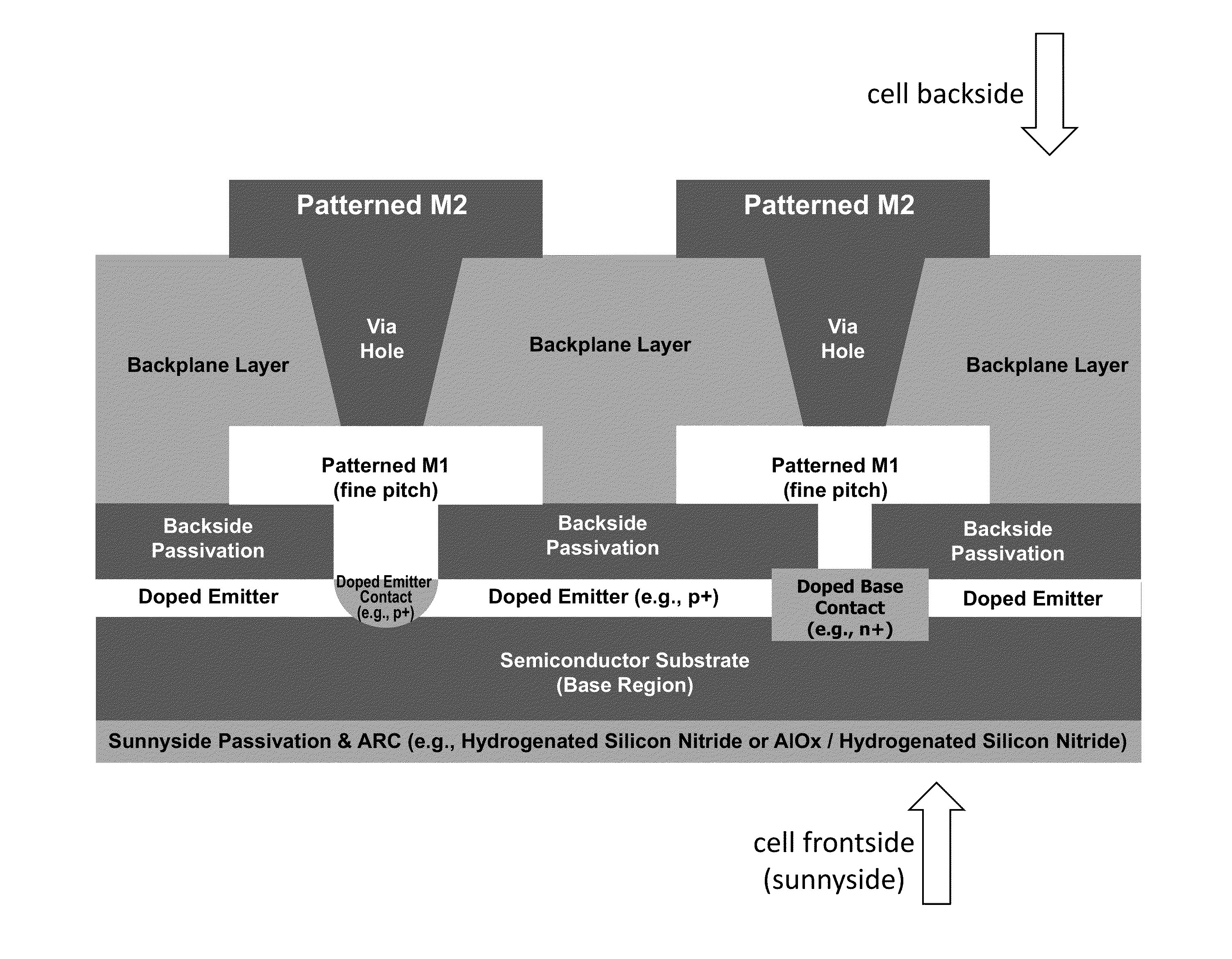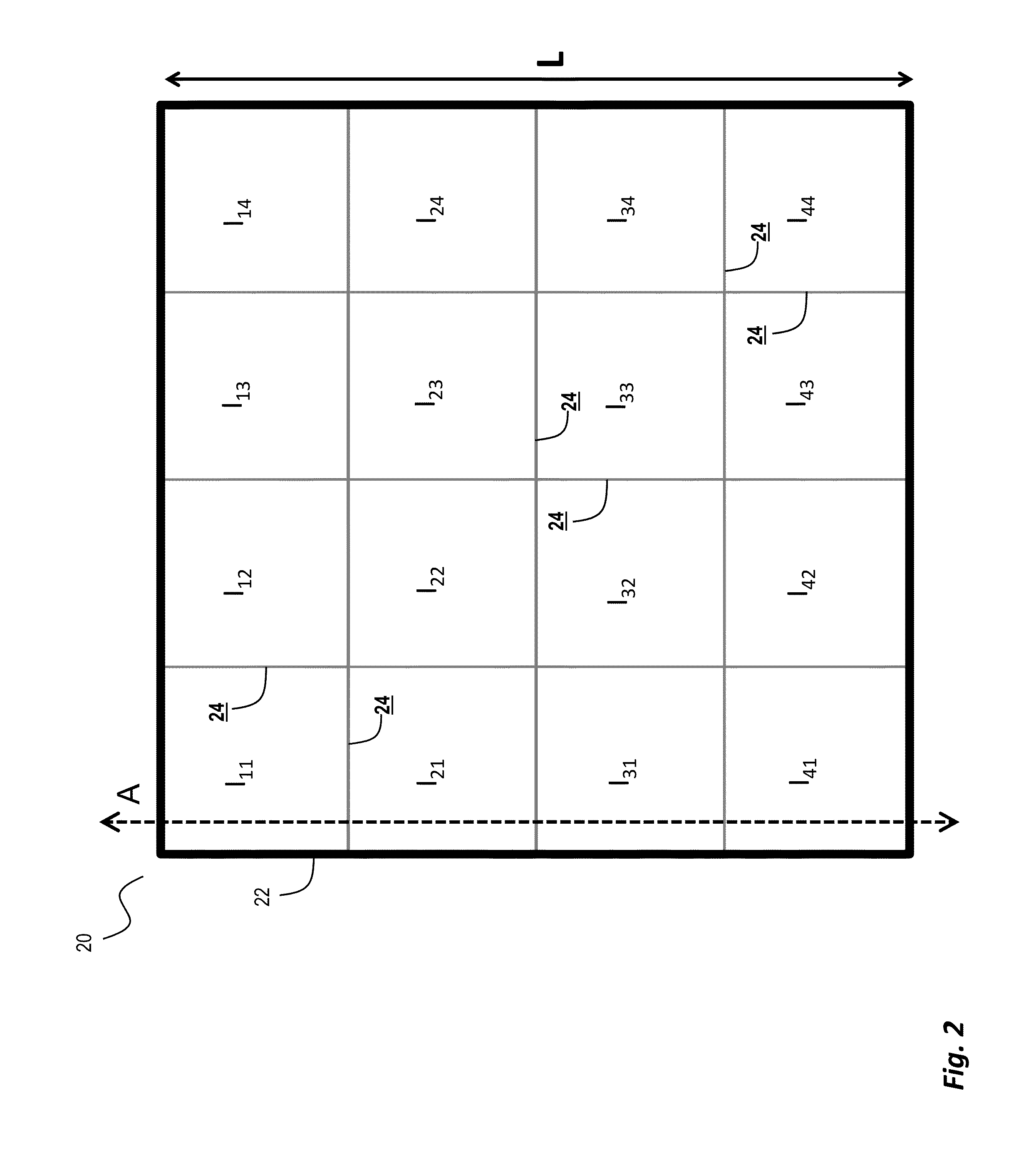Systems and methods for monolithically isled solar photovoltaic cells and modules
a solar photovoltaic and monolithic technology, applied in photovoltaic supports, power plants, sustainable buildings, etc., can solve the problems of thermally induced warpage crack generation and propagation, significant challenges and possible manufacturing yield degradation, and increase manufacturing cost and/or some manufacturing throughput and yield compromises, etc., to reduce or eliminate disadvantages and problems. , the effect of high efficiency
- Summary
- Abstract
- Description
- Claims
- Application Information
AI Technical Summary
Benefits of technology
Problems solved by technology
Method used
Image
Examples
Embodiment Construction
[0042]The following description is not to be taken in a limiting sense, but is made for the purpose of describing the general principles of the present disclosure. The scope of the present disclosure should be determined with reference to the claims. Exemplary embodiments of the present disclosure are illustrated in the drawings, like numbers being used to refer to like and corresponding parts of the various drawings.
[0043]Importantly, the exemplary dimensions and calculations disclosed for embodiments are provided both as detailed descriptions for specific embodiments and to be used as general guidelines when forming and designing solar cells in accordance with the disclosed subject matter.
[0044]And although the present disclosure is described with reference to specific embodiments, such as backplane-attached / back-contact solar cells such as interdigitated back-contact (IBC) solar cells using monocrystalline silicon substrates and other described fabrication materials, one skilled ...
PUM
 Login to View More
Login to View More Abstract
Description
Claims
Application Information
 Login to View More
Login to View More - R&D
- Intellectual Property
- Life Sciences
- Materials
- Tech Scout
- Unparalleled Data Quality
- Higher Quality Content
- 60% Fewer Hallucinations
Browse by: Latest US Patents, China's latest patents, Technical Efficacy Thesaurus, Application Domain, Technology Topic, Popular Technical Reports.
© 2025 PatSnap. All rights reserved.Legal|Privacy policy|Modern Slavery Act Transparency Statement|Sitemap|About US| Contact US: help@patsnap.com



